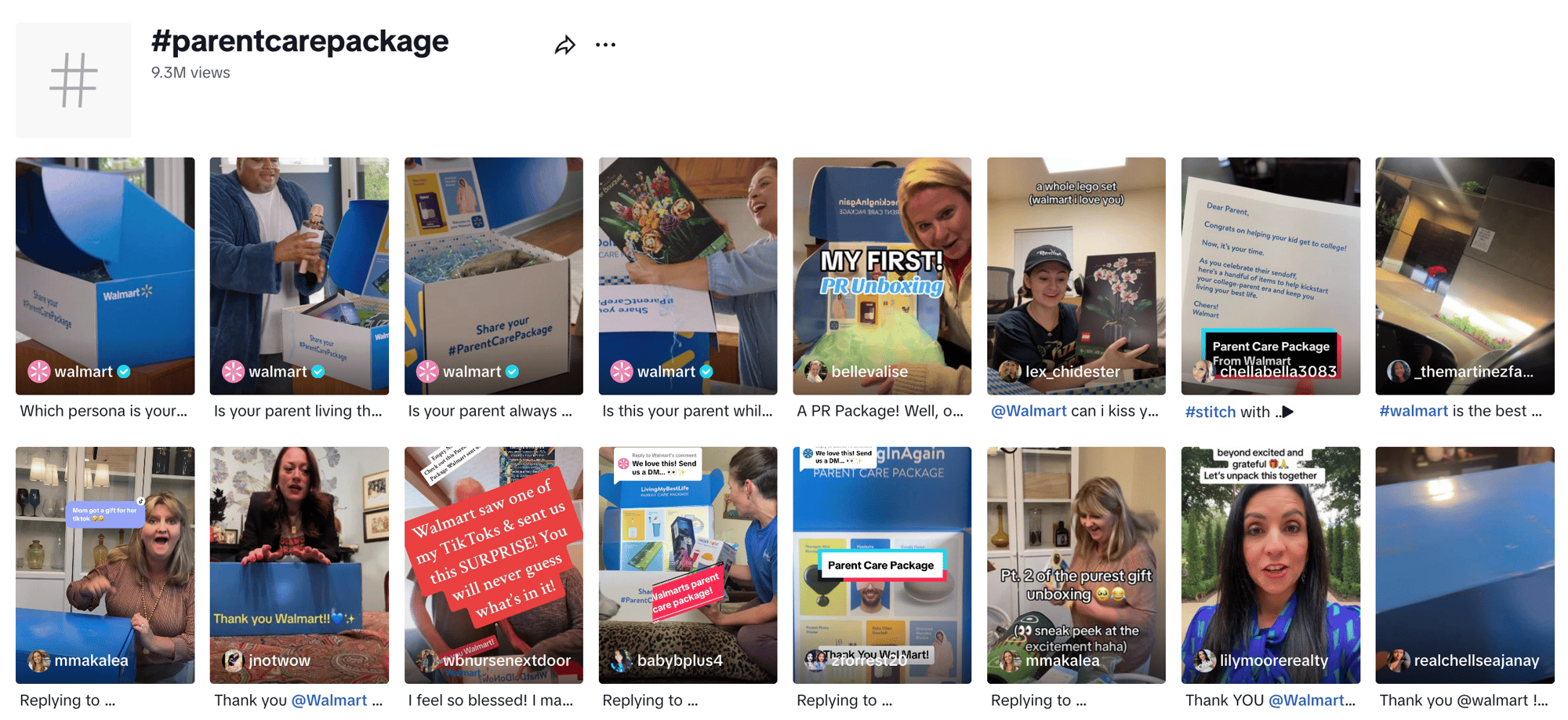In the dynamic realm of marketing, where consumer behavior evolves rapidly, the ability to create a unified brand story across multiple platforms is not just a strategy—it's a necessity. An effective integrated marketing campaign seamlessly integrates various channels and assets to deliver a cohesive message that resonates with diverse audiences. Let's delve deeper into each crucial aspect of building a compelling integrated marketing strategy.
1. Digital Platforms: Embracing the Online Realm
Assets: Engaging Social Media Content, Dynamic Video Ads, Interactive Web Content
In today's digital age, an online presence is non-negotiable for any brand. Social media platforms offer a direct line of communication with your audience. However, it's crucial to tailor your content strategy for each platform. For instance, Instagram favors visually appealing and concise content, while LinkedIn caters to a more professional audience. Interactive web content adds an extra layer of engagement. Features like quizzes, polls, and interactive storytelling keep visitors on your site longer and enhance their overall experience. For instance, you can leverage tools such as Typeform for creating engaging quizzes and polls, or use platforms like Twine for crafting interactive storytelling experiences.
Video
In the ever-evolving landscape of digital marketing, dynamic video ads have emerged as a cornerstone strategy. Their effectiveness in capturing audience attention and conveying brand messages has made them a staple in contemporary promotional campaigns. Crafting a compelling video, however, extends beyond the mere presentation of products; it involves the art of storytelling.
Storytelling in video ads is a powerful method to connect with audiences on a deeper level. By incorporating narrative arcs, brands can create a cohesive and engaging storyline that resonates with viewers. This approach allows for a more immersive experience, transforming the advertisement from a promotional piece into a narrative that elicits emotions and forges a memorable connection.
Emotional triggers play a pivotal role in the success of video ads. Aligning the content with emotions that resonate with the target audience can evoke a stronger response and foster a lasting impression. Whether it's humor, empathy, excitement, or nostalgia, tapping into emotional triggers creates a relatable and memorable viewing experience.
High production values are essential in elevating the overall quality and impact of video ads. Professional cinematography, attention to detail in editing, and the use of visually appealing graphics contribute to a polished and aesthetically pleasing presentation. Investing in production values not only enhances the visual appeal but also reflects positively on the brand's commitment to delivering excellence.
Furthermore, maintaining audience attention throughout the video is crucial. This requires a balance between storytelling elements, pacing, and the strategic placement of key messages. A well-crafted video should seamlessly guide viewers through a captivating narrative while ensuring that the brand's core messages are effectively communicated.
.png?width=1034&name=c1-min%20(1).png)
2. Traditional Media: Reinventing the Classics
Assets: Print Advertisements, Radio Spots, Television Commercials
While digital platforms have become the primary focus in the contemporary marketing landscape, the influence of traditional media remains significant, particularly when aiming to reach specific demographics. Despite the rise of online channels, traditional media, such as print advertisements, continues to hold sway, offering unique advantages in capturing the attention of niche audiences.
When strategically placed, print advertisements possess a tangible and enduring quality that can resonate effectively with certain demographics. Magazines, newspapers, and other printed materials provide a tactile experience that digital mediums may not replicate. This physicality can create a lasting impression on the audience, fostering a sense of credibility and trust.
Furthermore, traditional media often allows for more targeted placements, enabling advertisers to tailor their messages to specific geographic locations or publications that cater to a particular niche. This level of precision can be crucial when attempting to connect with audiences that may not be as readily reached through digital channels.
In addition, some demographic groups still prefer and trust traditional media over digital sources. Older generations, for instance, may have stronger connections to print materials and find them more reliable. By incorporating traditional media into a comprehensive marketing strategy, businesses can ensure they are reaching a diverse audience across various age groups and preferences.
Ultimately, the combination of digital and traditional media allows for a holistic approach to marketing, maximizing the reach and impact of campaigns. Acknowledging the enduring influence of traditional media alongside the prevalence of digital platforms enables marketers to create well-rounded strategies that effectively engage diverse target demographics.
3. Content Marketing: Educate and Empower
Assets: Informative Blog Posts, E-books, Infographics
Content marketing transcends mere content creation; its essence lies in delivering substantial value to your audience. Crafting informative blog posts that not only answer your audience's questions but also position your brand as an authority in your industry is paramount. To achieve this, consider strategies that go beyond surface-level information.
When developing blog posts, delve into comprehensive research to address the specific needs and concerns of your target audience. By providing in-depth insights, practical solutions, and valuable information, you not only establish credibility but also foster a relationship of trust with your readers. Incorporating real-world examples, case studies, and expert opinions can further enhance the richness of your content.
SEO
A critical aspect of effective content marketing is ensuring the discoverability of your blog posts. Implementing SEO optimization techniques is essential to enhance the visibility of your content in search engine results. Focus on keyword research, meta tags, and quality backlinks to maximize the chances of your blog posts being found by your target audience when they search for relevant topics.
E-books
E-books present an avenue to explore topics in greater depth. When structuring an effective e-book, consider elements such as a compelling cover design that grabs attention, well-organized chapters that flow logically, and interactive elements that engage the reader. Emphasize the role of e-books as lead magnets, offering valuable insights or solutions in exchange for customer information. This not only builds your email list but also positions your brand as an authority that provides substantial value.
Infographics
Infographics serve as powerful tools for visual storytelling. Highlight successful examples and delve into design principles that make infographics visually appealing and easy to understand. Explore how infographics can distill complex information into digestible visuals, making them shareable across various platforms. By incorporating visually engaging elements, such as icons, charts, and graphs, infographics can effectively communicate information and capture the attention of your audience in a format that is easy to consume and share.
4. Email Marketing: Personalized and Direct
Assets: Personalized Email Campaigns, Newsletters, Targeted Promotions
Email marketing persists as a direct and intimate channel of communication, allowing brands to connect with their audience on a personalized level. Delving into the art of personalization is key to maximizing the impact of email campaigns, utilizing customer data to create tailored and relevant content.
Personalization
The first step in personalization involves leveraging customer data effectively. By analyzing demographic information, purchase history, and engagement patterns, marketers can gain valuable insights into individual preferences and behaviors. This data becomes the foundation for crafting personalized email campaigns that resonate with each recipient on a more individualized level.
Segmentation
Segmentation strategies play a crucial role in tailoring content based on customer preferences. Grouping subscribers into segments based on demographics, interests, or past interactions allows for the delivery of content that is more likely to be relevant to each subgroup. Whether it's promoting specific products, addressing particular pain points, or acknowledging past purchases, segmentation enhances the personalization of email communication.
Newsletters
Newsletters, when executed effectively, serve as a powerful tool to keep the audience informed and engaged. Exploring different formats, such as curated content, product highlights, and exclusive offers, allows for variety in communication. The frequency and timing of newsletters are critical considerations for optimal engagement. Testing different schedules and analyzing open and click-through rates can help determine the most effective timing for newsletters, ensuring they reach the audience when they are most receptive.
Targeted promotions stand out as a potent strategy to boost conversion rates. By showcasing successful examples of promotions that align with customer preferences and purchase history, brands can create a sense of relevance and exclusivity. Utilizing A/B testing strategies further refines promotional campaigns, enabling marketers to identify the most effective messaging, visuals, and incentives that resonate with their audience.
In summary, the art of personalization in email marketing involves leveraging customer data, employing segmentation strategies, and crafting content that speaks to individual preferences. With well-tailored newsletters and targeted promotions, brands can create a more intimate connection with their audience, fostering engagement and ultimately driving conversions.

5. Experiential Marketing: Creating Lasting Impressions
Assets: Event Promotions, Immersive Activations, Branded Experiences
Experiential marketing, as a departure from traditional advertising, centers around creating memorable interactions that leave a lasting imprint on consumers. Strategic event promotion plays a pivotal role in generating anticipation and excitement, utilizing various channels including social media, email, and traditional media to maximize reach and impact.
When delving into the immersive experiences at the heart of experiential marketing, it's essential to explore successful examples that have left a profound impact on audiences. Technological advancements, particularly augmented reality (AR) and virtual reality (VR), have revolutionized immersive activations. Examples such as interactive AR apps that overlay digital content on the physical world or VR experiences that transport participants to virtual realms showcase the potential of technology in creating memorable and engaging brand experiences.
The integration of sensory elements—touch, sight, and sound—further amplifies the immersive nature of these activations. For instance, tactile interactions, visually stunning displays, and carefully curated soundscapes contribute to a multi-sensory experience that captivates attendees. The impact of these sensory elements goes beyond the event itself; they create a memorable and shareable brand experience that resonates with participants long after the event concludes.
Consistency in branded experiences is a cornerstone of successful experiential marketing. Maintaining a cohesive brand identity across all touchpoints, from event design to promotional materials, reinforces brand recall and establishes a unified brand image. Attendees should seamlessly connect the immersive event experience with the overall brand identity, ensuring a consistent and compelling narrative.
Post-event engagement is crucial for sustaining the momentum generated by experiential marketing. Strategies for this phase may include leveraging user-generated content shared during the event, creating highlight reels for social media, and deploying follow-up email campaigns. Encouraging participants to share their experiences and memories not only extends the reach of the event but also fosters a sense of community around the brand, reinforcing the emotional connection established during the immersive experience.
In summary, experiential marketing's immersive nature necessitates a holistic approach that encompasses strategic promotion, technological innovation, sensory engagement, consistency in branding, and post-event strategies. By orchestrating these elements effectively, brands can create memorable and impactful experiences that resonate with their audience and leave a lasting impression.

6. Influencer Collaborations: Extending Reach through Authenticity
Assets: Influencer-Curated Content, Endorsements, Collaborative Campaigns
Influencer marketing has become a cornerstone of brand promotion. Explore specific examples of influencer-curated content that seamlessly integrates with brand values. Discuss the importance of authenticity in influencer collaborations and how to identify influencers whose values align with your brand.
Influencer endorsements can build trust among their followers. Showcase examples of successful endorsements and discuss how genuine recommendations from influencers impact consumer perceptions. Explore the nuances of negotiation and collaboration in influencer marketing.
Collaborative campaigns with influencers create a symbiotic relationship. Showcase successful collaborative campaigns that benefited both the brand and the influencer. Discuss the importance of clear communication, mutual goals, and maintaining authenticity in collaborative efforts.
7. Public Relations: Building Credibility and Image Management
Assets: Press Releases, Media Coverage, Thought Leadership Articles
Influencer marketing has evolved into a cornerstone of brand promotion, leveraging the reach and authenticity of influencers to connect with target audiences. Examining specific examples of influencer-curated content that seamlessly integrates with brand values sheds light on the effectiveness of this strategy. For instance, consider an eco-friendly brand collaborating with influencers who are passionate about sustainability, showcasing how their daily lives align with the brand's values. Such collaborations create authentic and relatable content that resonates with the influencer's audience while staying true to the brand's ethos.

Crafting Success in a Dynamic Landscape
The success of an integrated marketing campaign lies in the synergy between various mediums and assets. By strategically combining digital and traditional channels, along with diverse content types, your brand can establish a cohesive and compelling narrative that resonates with your target audience. As consumer behavior continues to evolve, adapting and diversifying your marketing approach will position your brand for sustained success in the competitive landscape.
In the fast-paced world of marketing, adaptability and innovation are your greatest allies. Stay tuned to emerging trends, be responsive to changes, and let the dynamism of your integrated marketing strategy propel your brand to new heights. Remember, it's not just about marketing—it's about creating experiences that resonate and endure in the minds of your audience.
Have a marketing project in mind?
Leave us a brief message and one of our expert associates will get back to you shortly.






